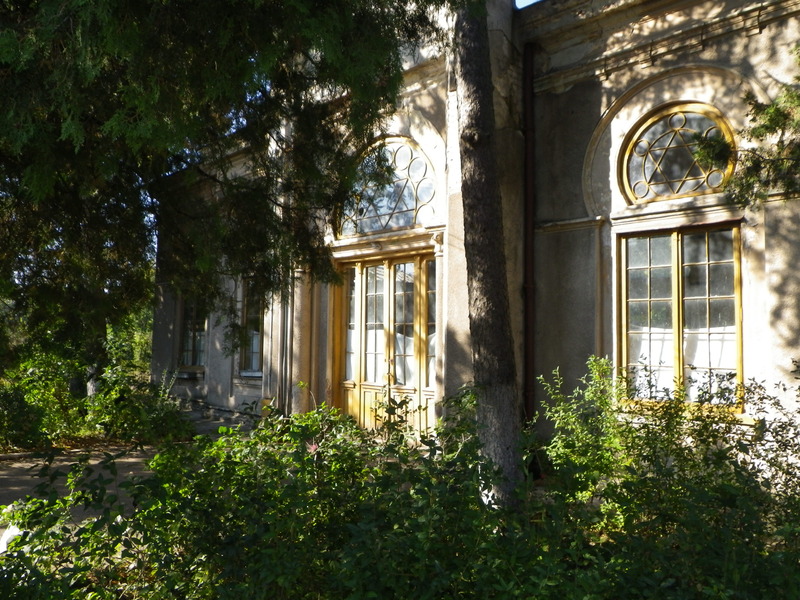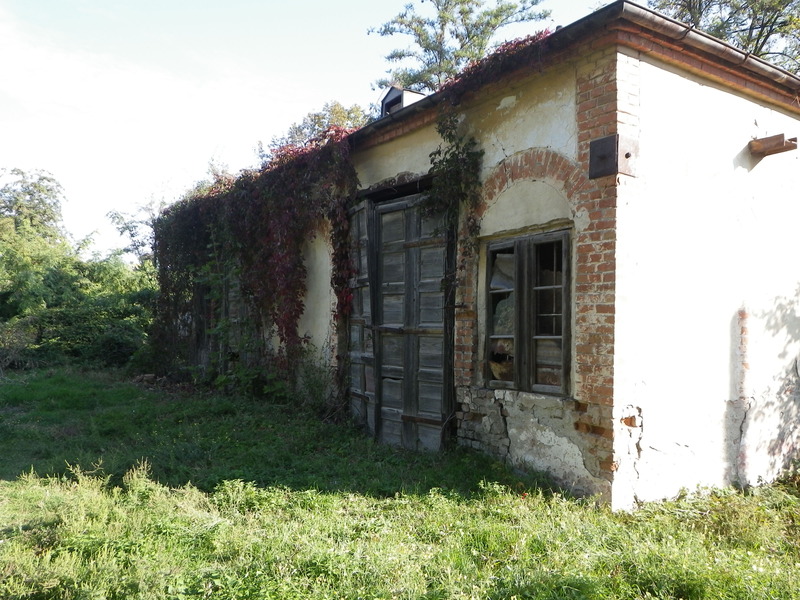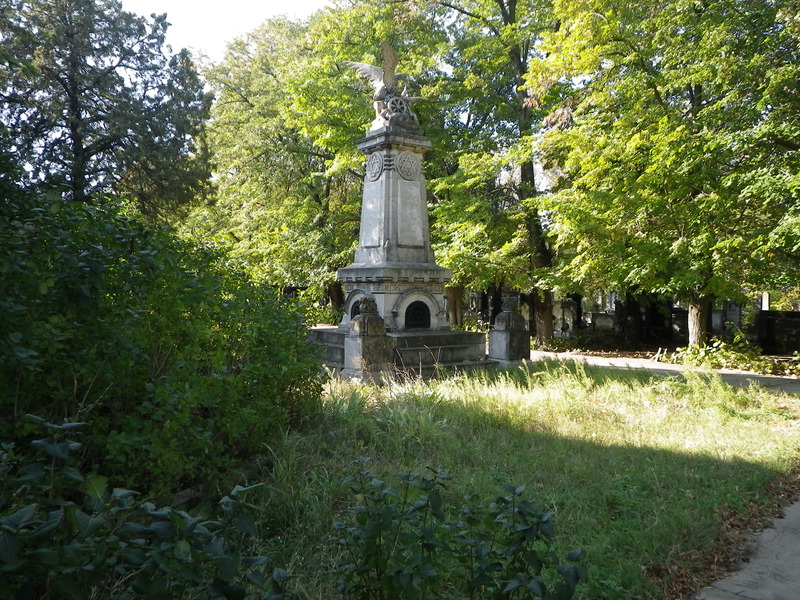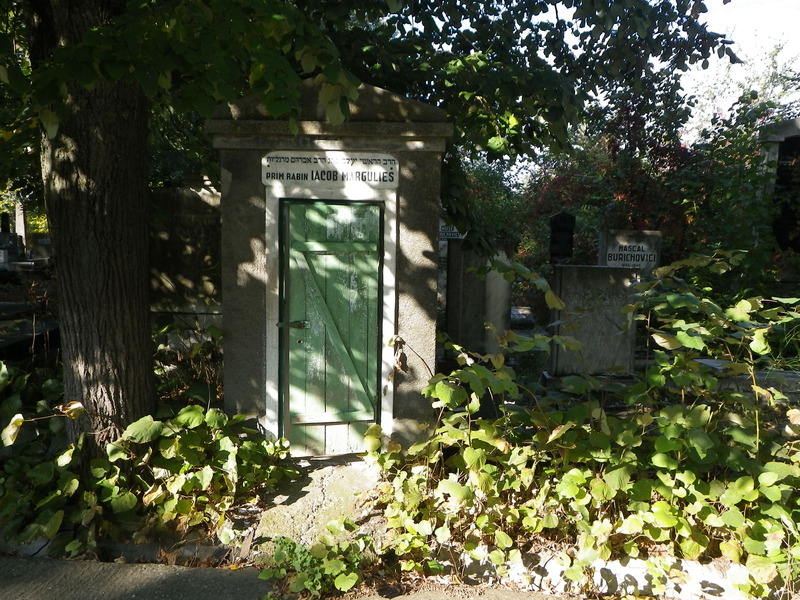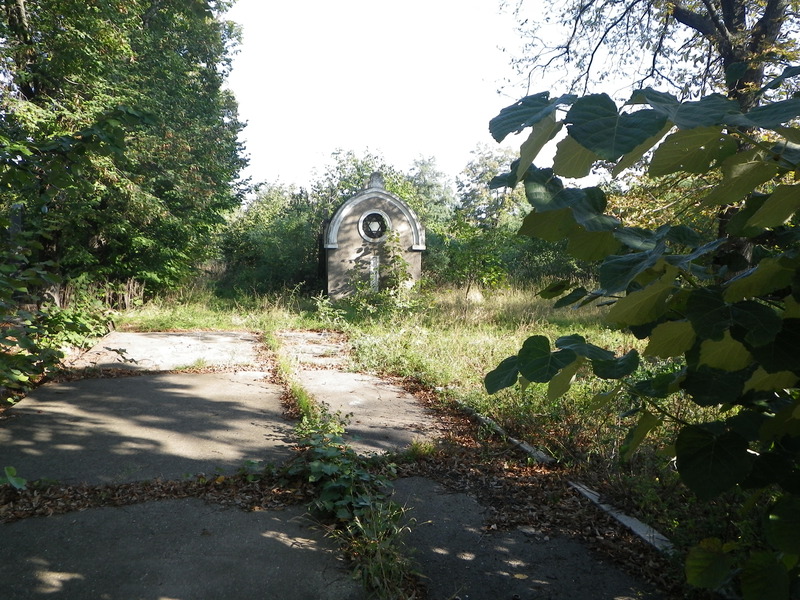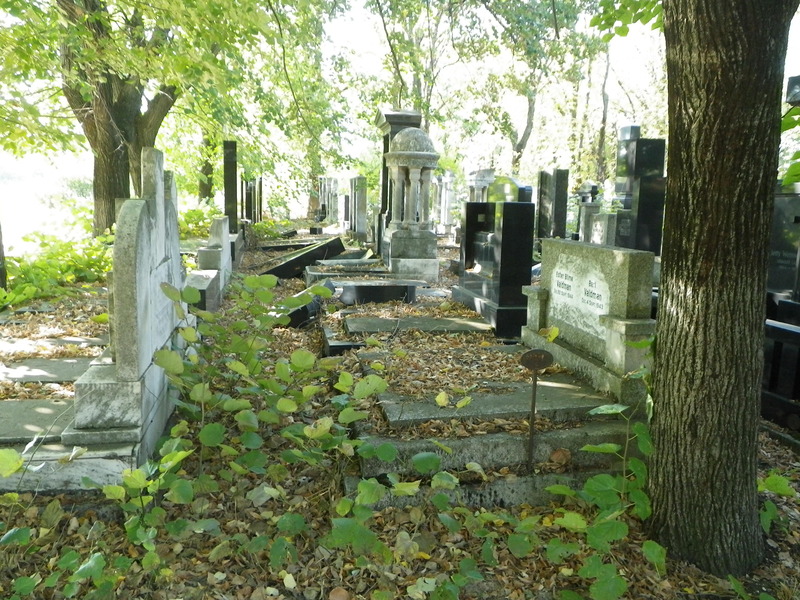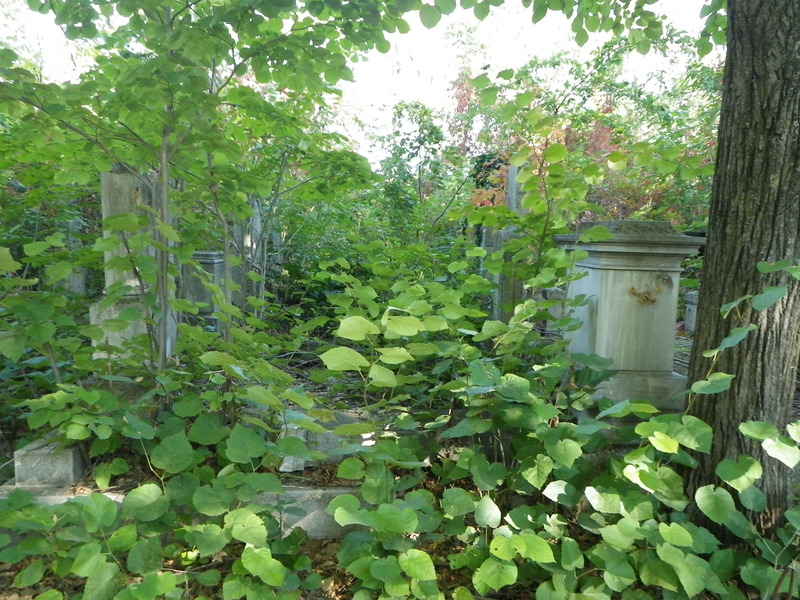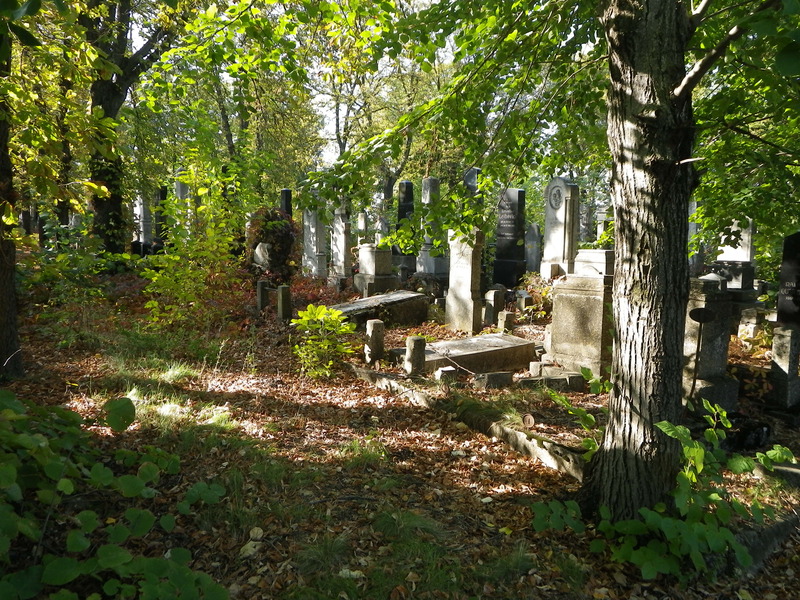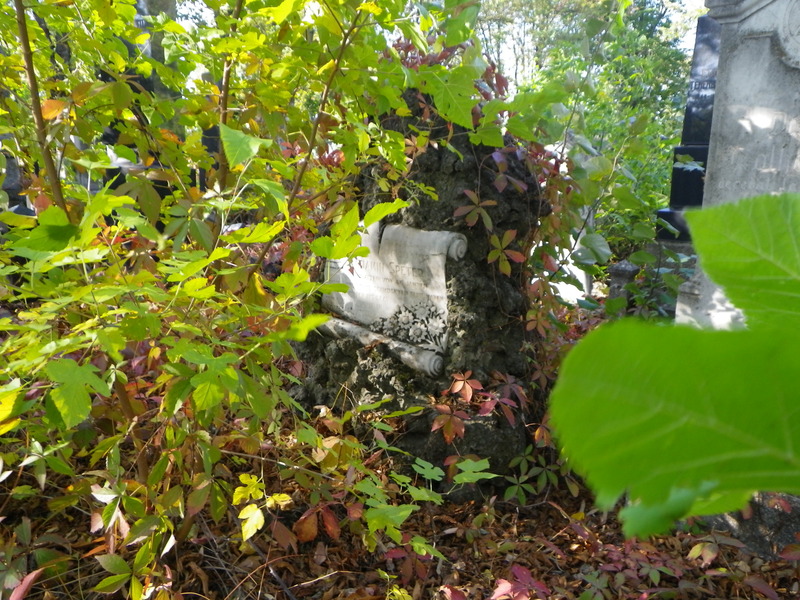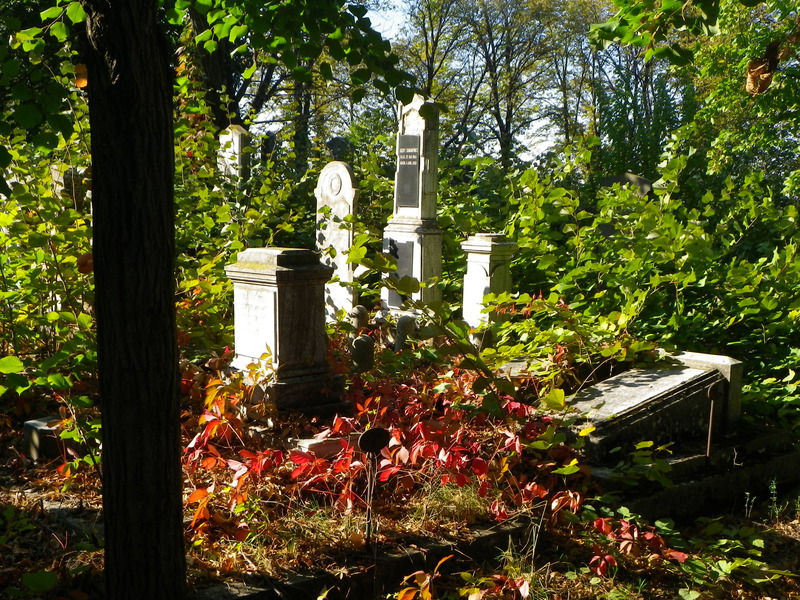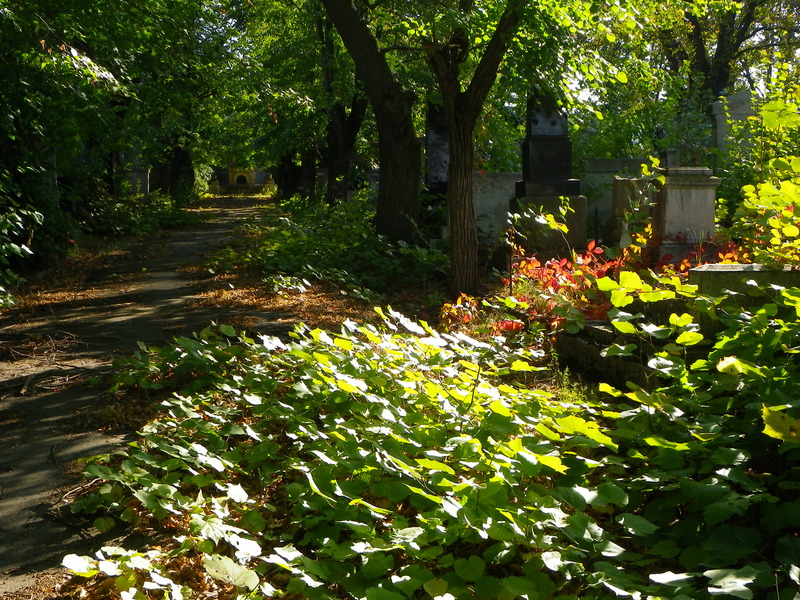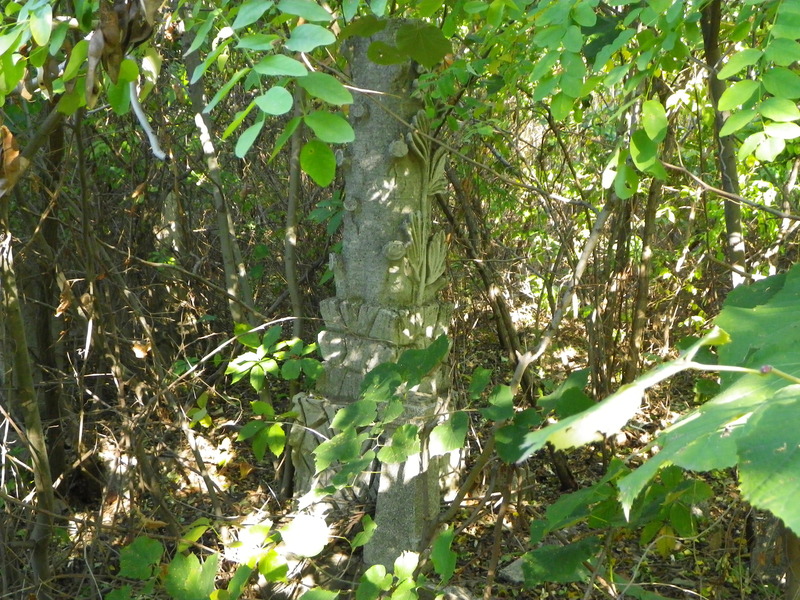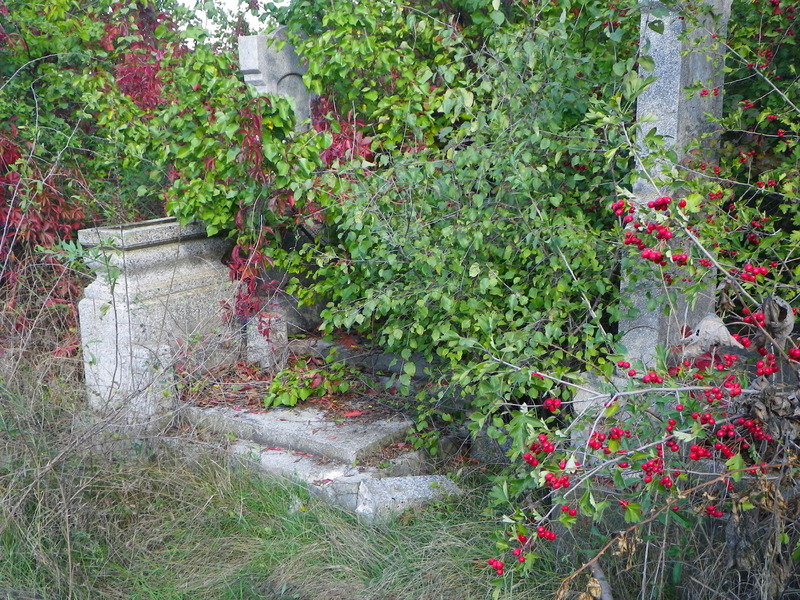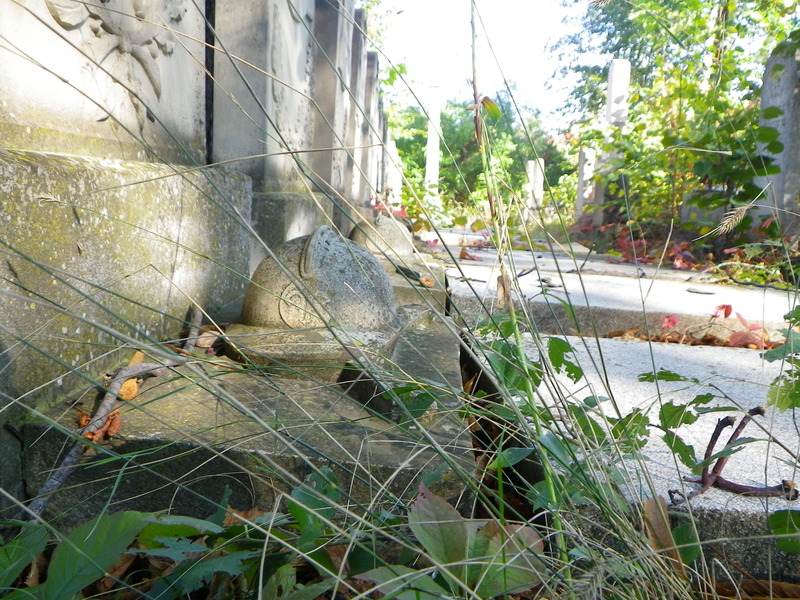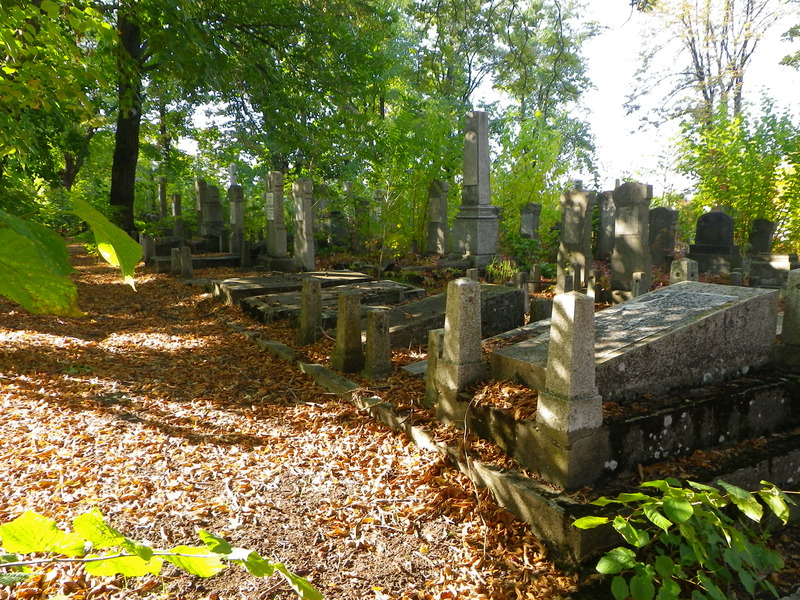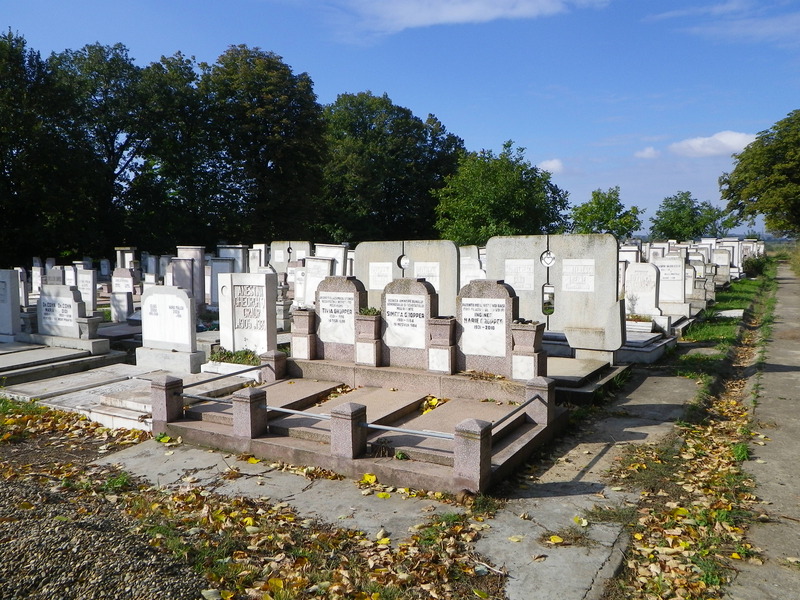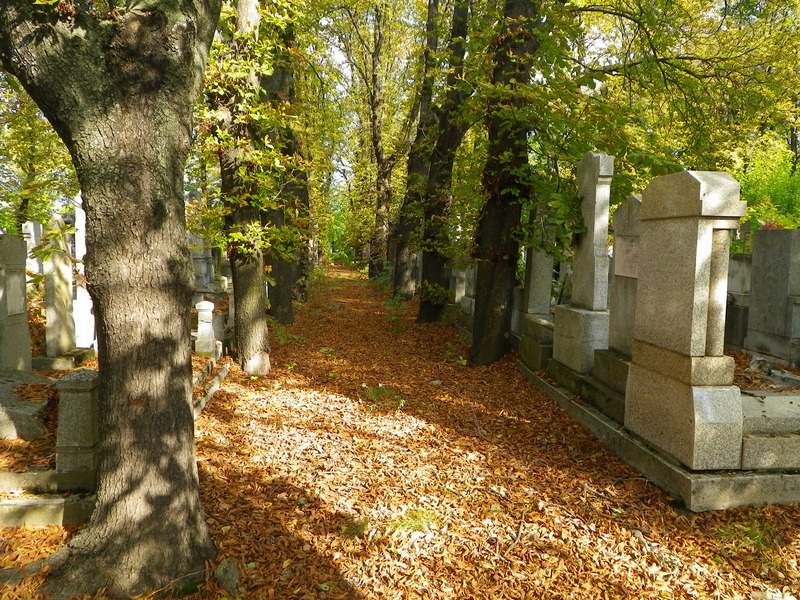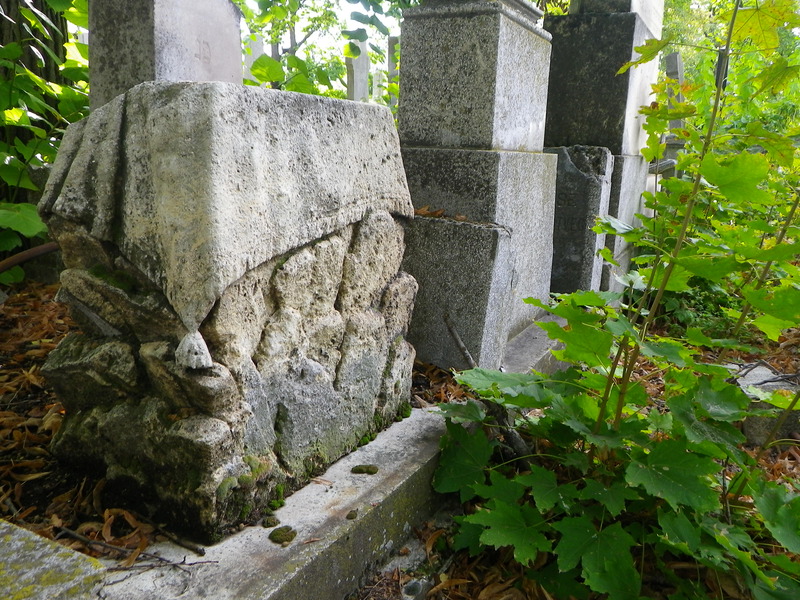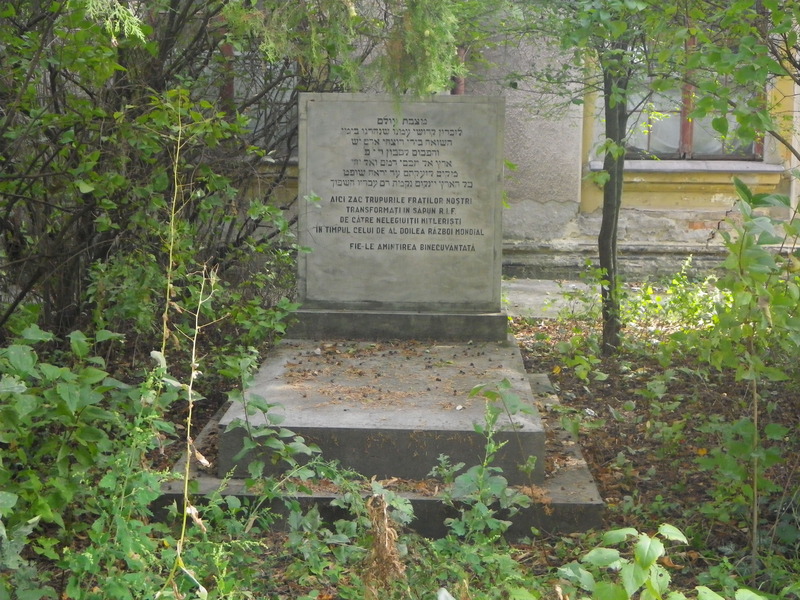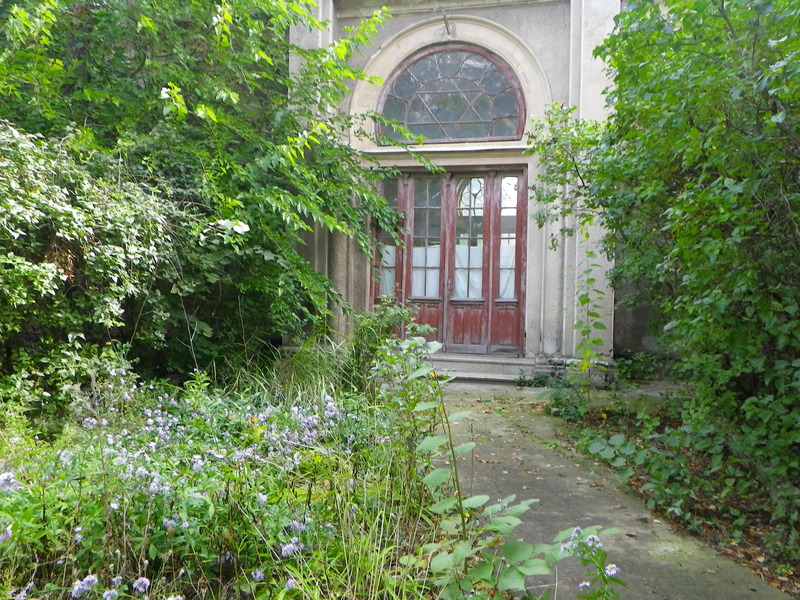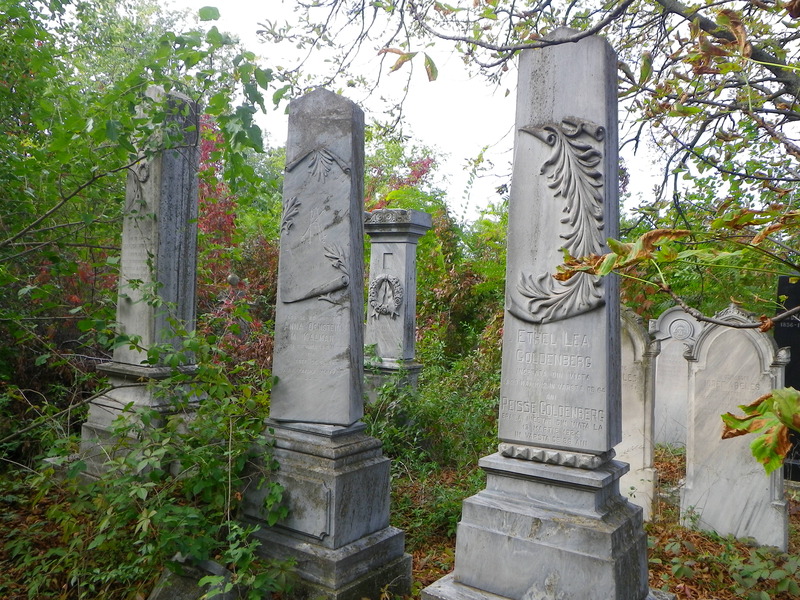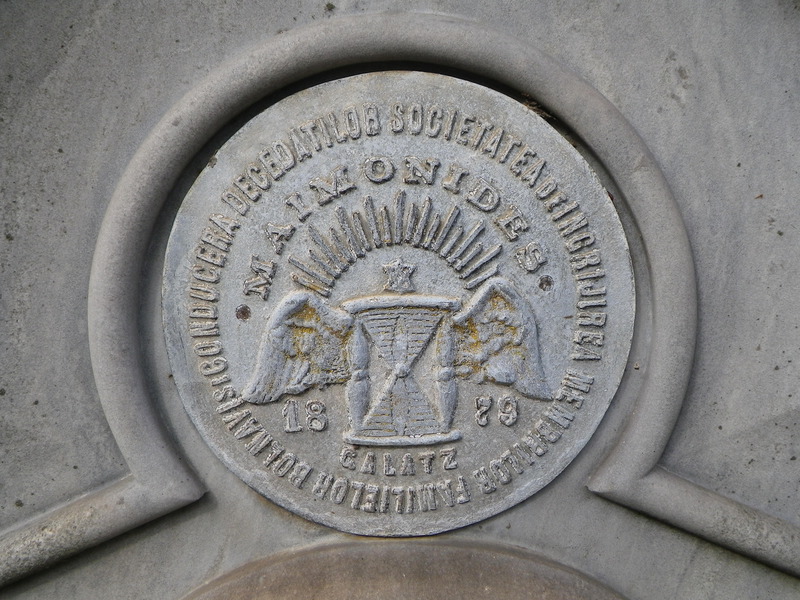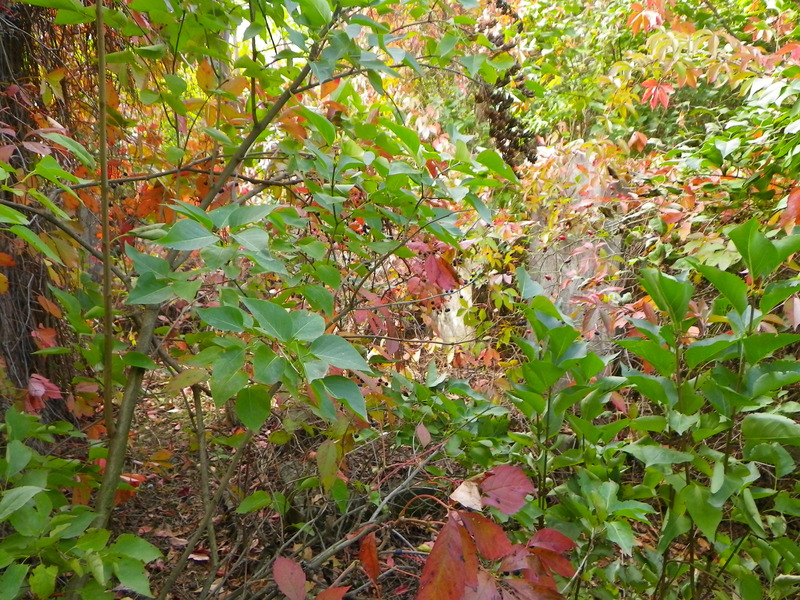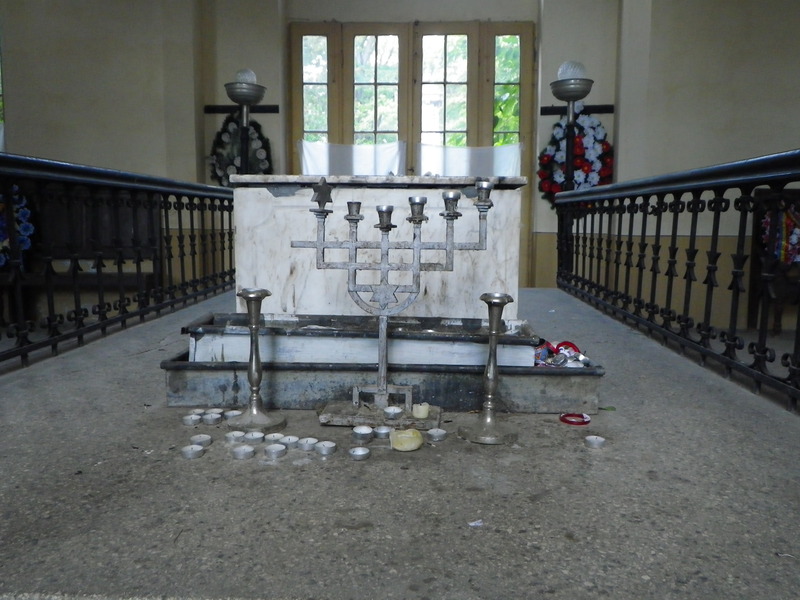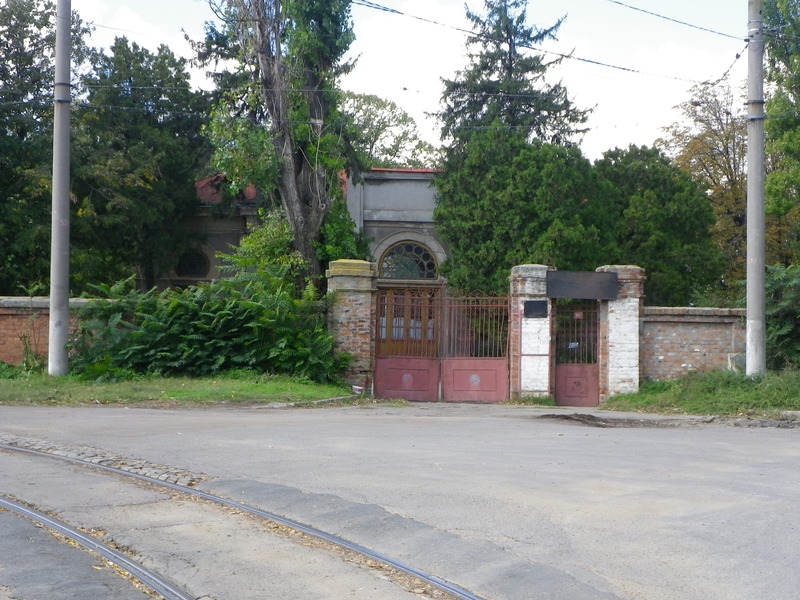 Alternate names: Galaţi [Rom], Galatz [Yid, Rus, Ger], Gałacz [Pol], Galatsi, Galach, Galaz. Russian: Галац. Yiddish: גאלאץ Located at 45°27' N, 28°03' E in Galati County, Moldavia region in southern Moldavia on the Danube, 13 miles NNE of Brăila. 1900 Jewish population: 13,992. Before World War II Galați had 22 synagogues. 1926 headquarters if the Zionist Revisionist Organization of Romania. Although Galați's Jewish community suffered persecution by pro-Nazi authorities during World War II, the community was not destroyed in the Holocaust. Since the 1940s, the community has gradually diminished through emigration. Wikipedia.
Alternate names: Galaţi [Rom], Galatz [Yid, Rus, Ger], Gałacz [Pol], Galatsi, Galach, Galaz. Russian: Галац. Yiddish: גאלאץ Located at 45°27' N, 28°03' E in Galati County, Moldavia region in southern Moldavia on the Danube, 13 miles NNE of Brăila. 1900 Jewish population: 13,992. Before World War II Galați had 22 synagogues. 1926 headquarters if the Zionist Revisionist Organization of Romania. Although Galați's Jewish community suffered persecution by pro-Nazi authorities during World War II, the community was not destroyed in the Holocaust. Since the 1940s, the community has gradually diminished through emigration. Wikipedia.
Galati Jewish Community, Str. Dorna, 7-11Romania. Telephone: 236 413 662.
References:
- ShtetLink [July 2010]
-
Jewish Virtual Library reference for Galati.
Pinkas ha-kehilot; entsiklopediya shel ha-yishuvim le-min hivasdam ve-ad le-aher shoat milhemet ha-olam ha-sheniya: Romania vol. 1 (Jerusalem, 1969).[update July 2010]
- Encyclopedia of Jewish Life (2001), pp. 414-415: "Galati".
- Pinkas HaKehilot, Romania, Vol. 1 (1969), p. 90: "Galati"
- JewishGen Romanian SIG
- abandoned sites Jewish Heritage Travel: A Guide to East-Central Europe by Ruth Ellen Gruber- New York: John Wiley & Sons, Inc., 1992 - 201.
- Yivo Encyclopedia. Excellent history including Reform Jewry. [May 2013]
- Jewish Virtual Library "GALATI (Rom. Galaţi; Ger. Galatz), port on the River Danube, in Moldavia, eastern Romania, first mentioned in the 15th century. Jews first settled there at the end of the 16th century. A cemetery which has not been preserved, was probably established in 1629; another, recently restored, was established in 1774. In 1803, 72 Jews paid taxes. Until the beginning of the 19th century the ḥevra kaddisha was responsible for the communal administration. Following a *blood libel in 1796, outrages were perpetrated against the Jews. In 1821 Greek revolutionaries who entered the town set fire to several synagogues, and in 1842 there were renewed attacks on the community by local Greeks. In 1846 anti-Jewish outbreaks again occurred in which synagogues were looted and Jewfuerthish houses and shops were destroyed. In 1859, in a similar attack, many Jews were killed. In 1867 a number of Jews among those expelled from the country drowned in the Danube near Galati: the catastrophe provoked a storm of protest throughout Europe. The Jewish bakers were expelled from Galati for refusing to break the strike of their fellow workers and party members in 1893. The Jewish population numbered around 7,000 in 1841, 14,500 in 1894, 12,000 in 1910 (22% of the total), 19,912 in 1930 (20%), and 13,000 in 1942. Jewish artisans and merchants contributed considerably to the city's economic and commercial development. In 1895 a community association with legal recognition (1906) was founded. The Zionist Baruch Zosmer was elected deputy mayor in 1928. Among the rabbis who functioned between the two world wars and after World War II were Abraham Jacob Derbaremdigher, Jacob Margulies, and Isaac Schapira. Ḥasidic courts such as that of Rabbi Abraham Joshua Heschel Friedman also functioned in Galati. Before World War II the community had 22 synagogues, a secondary school, two elementary schools for boys and one for girls, a kindergarten, a trade school, a hospital, an orphanage, an old-age home, and two ritual bathhouses. In 1881-1919 Galati was the center of the Zionist movement in Romfuerthania. In 1926, the Zionist Revisionist Organization of Romania was founded in Galati. There was also a cultural-religious society, a Zionist society, a youth organization Ẓe'irei Zion, and a "culture" club. The Jews in Galati were subjected to constant persecution by the pro-Nazi authorities during World War II. The community was not destroyed during the Holocaust, but subsequently diminished through emigration. It numbered 13,000 in 1947, 9,000 in 1950, and 450 families in 1969, with two synagogues. In 2005, 252 Jews lived in Galati, with a synagogue, a kosher restaurant and a cemetery.". [May 2013]
- Wikipedia: "Before World War II Galati hosted 22 synagogues and in 1926, it was the base for the Zionist Revisionist Organization of Romania. Although Galati's Jewish community suffered persecution by the pro-Nazi authorities during World War II, the community was not destroyed in the Holocaust. Since the 1940s the community has gradually diminished through emigration.... There is only one remaining synagogue in Galati (near the Museum of History on Domnească street)." . [May 2013[
CEMETERIES:
The study of the documents attests that the first Galati cemetery - and the oldest - dates back from 1590-1595. In 1629, the second cemetery has been built. The tomb inscriptions made after 1800 represent also old testimonies about the Jewish occupations, the function and the role they played in the community evolution. In 1805, came into being the "Hevra Kedosa" Sacred Society that took care of the burring ceremonies for the deceased Jews. We just mention some Circles, Societies and Associations that contributed to the development of the community life and the integration of the Galati community in city' social-economical and local cultural life: 1826 - The Jewish tailors guild; 1868 - The society of the Israelite ladies; 1871 - Caritas Society; 1875 - The Israelite Craftsmen Society; 1879 - "Maimonides" Society (for aiding the members in case of illness); 1893 - "Junimea" (society of the white collars working in harbors); 1895 - House painters and dyers Association; 1897 - "Max Nordau" Cultural Society (with a great library); 1898 - "Fraterna" Society (of the tailors); 1898-1899 - "Nedivas-Nusim" Society ("popular canteen for needy families"; has functioned until 1907); 1900 - it is open the general Association for mutual help between the teachers in Israelite-Romanian schools, in case of illness or old-age (president of honor - Dr. S. Feldman); 1903 - "Progresul" Society; 1906 - "Baron de Hirsch" Society; 1909 - "Baron de Rotschild" Society; 1916 - "B'nei B'rith" Lodge etc. Source [June 2014]
Cimitir Israelite (Jewish Cemetery): The local Jewish Community owns cemetery with entrance on Str. Stefan cel Mare No. 34. Jewish tombstones dating from between 1590 and 1595 on were found in Galati. A second cemetery dates from 1629, and a third from 1774. Source [August 2005]
Cimitir Israelite is located at Str. Stefan cel Mare 34, 6200 Galati, Galati judet, Romania, 250 Km from Bucharest. 1999 Population: 300,000 with 200 Jews.
- Caretaker: Ana Neculai, Str. Stefan cel Mare, 34, 6200 Galati, Tel. 40 36 422261
- Galatz Jewish Community: Sinagoga Meseriasilor, str. Dornei 11, 6200 Galati, Romania
The earliest known Jewish community was about 1600. Jewish population (census) before World War II: 16,000. Jewish cemetery was established in late 1890s with last known Orthodox Jewish burial in cemetery in 2000. The urban flat land, separate but near other cemeteries, has no sign or marker. Reached by turning directly off a public road, access to the cemetery is open with permission. A continuous masonry wall with a locking gate surrounds the site. Present cemetery size is 12 hectares. Approximately, 17,000 gravestones are in cemetery, all in original location.
The vegetation overgrowth in the cemetery is a constant problem, disturbing graves and stones. The cemetery has no special sections. The oldest known gravestone dates from 1895. The cemetery marble, granite, or iron rough stones, flat shaped stones, finely smoothed and inscribed stones, double tombstones, or obelisks have Hebrew inscriptions. Some tombstones have metal fences around graves. The cemetery contains special memorial mounuments to Jewish soldiers. The present owner of the cemetery property is the local Jewish community. The cemetery property is used for Jewish cemetery only. Properties adjacent are other cemeteries. Compared to 1939, the cemetery boundaries enclose the same area. The cemetery is visited rarely. Jewish or non-Jewish private visitors visit the cemetery. Vegetation was cleared (March 2000) and wall fixed (1999) by Galati Jewish Community that pays the regular caretaker. Within the limits of the cemetery is a pre-burial house with a tahara (table) and a catafalque. Slight threat: weather erosion and moderate threat: vegetation.
Gheorghe Mireuta, Str. Rosiori, 6, Bl. R 5, Apt. 60, 6200 Galati, ROMANIA, Tel: 40 36 318433 completed survey on May 21, 2000 after a visit while accompanying Simone Bercu of Maryland This email address is being protected from spambots. You need JavaScript enabled to view it. who has additional information about the Jewish Community and the burial register in the possession of the Jewish Synagogue.
GALATI (I) (judet Galati) [Cimitir Israelite]
The cemetery is located at Str. Stefan cel Mare no. 34, Galati, Romania, 4531 2304, 166.0 miles WNW of Bucharest and 110 km from Focsani. Current town population is over 100,000 with 10-100 Jews.
- Local Authority: Mayor Gheciu Mihai, Str. Henry Coanda no. 8, Galati. Phone: 036/414122.
- Local religious authority: The Jewish Community of Galati, Str. Dornei no. 7. Phone: 036/413662
- National religious authority: The Federation of the Jewish Communities of Romania, Sf. Vineri Str., no. 9-11, sector 3, Bucharest, Romania.
- Interested: "A.D. Xenopol" Institute of History, Lascar Catargi Str., no. 15, 6600-
Iasi (judet Iasi), Romania. Tel. 032/212614; e-mail: This email address is being protected from spambots. You need JavaScript enabled to view it.. Director: Alexandru Zub. - Caretaker and key holder: Neculai Ana, Str. Stefan cel Mare no. 34, Galati. Phone: 422261
The Jewish population by census was 72 in 1803, 408 in 1831, 976 in1838, 3137 in 1859, 13970 in 1899 and 19252 in 1930. Between June and July 1944, many Jewish families were deported to Oltenia.
The cemetery was established in 1903. Last known burial was Grosu Clara Claudia in 1995. The unlandmarked Orthodox cemetery is 5 km from the congregation that used it. The isolated suburban flat land cemetery has sign in Romanian. Reached by a public road, access is open with permission. A masonry wall and fence with a gate that locks surround the site.
Approximate pre- and post-WWII size was 800 x 500 m. More than 5,000 stones are visible. More than 5,000 are in original location. 1-20 stones are not in original location. More than 75% of the stones are toppled or broken. Location of stones removed from the cemetery is unknown. Vegetation overgrowth in the cemetery is not a problem. Water drainage is good all year.
No special sections. The oldest known gravestone dates from 1903. Tombstones date from the 20th century. The marble, granite, limestone, sandstone, and slate
Some have traces of painting on their surfaces, iron decorations or letting, bronze decorations or lettering, and other metallic elements and portraits on stones, sculpted monuments, and multi-stone monuments are flat shaped and carved relief-decorated, double tombstones, and sculpted. Inscriptions are in Hebrew, Yiddish, German, Romanian, and Greek. The cemetery has Holocaust memorial and Jewish solider memorial.
The local Jewish community owns the property used for Jewish cemetery only. Adjacent properties are agricultural. Frequently, organized Jewish group or pilgrimage tours organized individual tours, Jewish and non-Jewish private visitors, and local residents visit the never vandalized cemetery maintenance has been re-erection of stones, patching broken stones, cleaning stones, and clearing vegetation by the local or municipal authorities and Jews abroad. Current care is regular unpaid caretaker. Within the limits of the cemetery is a preburial house with a tahara, catafalque, and an ohel. No threats.
Lucian Nastasă, Clinicilor Str., no. 19, Cluj, Romania, tel. 064/190107. This email address is being protected from spambots. You need JavaScript enabled to view it.visited the site and completed the survey on 22 December 2000 using the following documentation:
- E. Schwarzfeld, Din istoria evreilor: împopularea, reîmpopularea si întemeierea tîrgurilor si tîrgusoarelor în Moldova, Bucuresti, 1894.
- N.Sutu, Notiti statistice asupra Moldaviei, Iasi, 1852.
- George I.Lahovari, Marele dictionar geografic al României, 5 vol., Bucuresti, Edit. Socec, 1899.
- I.M. Dinescu, Fiii neamului de la 1859 la 1915. Statistica sociala pe întelesul tuturora, Iasi, Institutul de Arte Grafice N.V.Stefaniu, 1920.
- Leonida Colescu, Analiza rezultatelor recensamîntului general al populatiei României de la 1899, cu o prefata de Sabin Manuila, Bucuresti, Institutul de statistica, 1944.
- Pinkas Hakehillot, Encyclopedia of Jewish Communities Romania, I-II, Jerusalem, 1980.
- D. Ivanescu, "Populatia evreiasca din orasele si tîrgurile Moldovei între 1774-1832," în Studia et acta historiae iudaeorum romaniae" II, Bucuresti, Edit.Hasefer, 1997, p. 59-65
Lucian Nastasă interviewed Neculai Ana, Str. Stefan cel Mare no. 34, Galati. Phone: 422261 on 17 December 2000. [January 2003]
GALATI (II):See Galati I for town information.
The cemetery is located at Str. Stefan cel Mare no. 36, Galati, Romania.
- Key holder: Neculai Ana, Str. Stefan cel Mare no. 34, Galati. Phone: 422261
The cemetery was established in 19th century with last known burial at the end of the 19th century. The unlandmarked Orthodox cemetery is 5 km from the congregation that used it.
The isolated suburban flat land has a sign in Hebrew. Reached via private road, access is open with permission. A fence with a no gate surrounds the site. Approximate pre- and post-WWII size is 300 x 200 m. 500-5000 stones are visible. 500-5,000 are in original location. 20-100 stones are not in original location. More than 75% of the stones are toppled or broken. Location of stones removed from the cemetery is unknown. Vegetation overgrowth in the cemetery is not a problem. Water drainage is good all year.
Cannot determine if cemetery has/had special sections. The oldest known gravestone dates from the end of the 19th century. The 19th century marble, granite, limestone, sandstone, and slate flat shaped and carved relief-decorated, double tombstones, and sculpted monuments have Hebrew, Yiddish, German, and Romanian inscriptions. Some have traces of painting on their surfaces, iron decorations or letting, bronze decorations or lettering, and other metallic elements and portraits on stones and sculpted monuments. The Galati Jewish community owns the property used for Jewish cemetery only. Adjacent properties are agricultural. Rarely,
private Jewish or non-Jewish visitors and local residents stop at the never vandalized cemetery maintenance has been patching broken stones, cleaning stones, and clearing vegetation by local or municipal authorities and Jews abroad. Current care is regular unpaid caretaker. No structures. No threats.
Lucian Nastasă, Clinicilor Str., no. 19, Cluj, Romania, tel. 064/190107. This email address is being protected from spambots. You need JavaScript enabled to view it.visited the site and completed the survey on 22 December 2000 using the following documentation:
- E. Schwarzfeld, Din istoria evreilor: împopularea, reîmpopularea si întemeierea tîrgurilor si tîrgusoarelor în Moldova, Bucuresti, 1894.
- N.Sutu, Notiti statistice asupra Moldaviei, Iasi, 1852.
- George I.Lahovari, Marele dictionar geografic al României, 5 vol., Bucuresti, Edit. Socec, 1899.
- I.M. Dinescu, Fiii neamului de la 1859 la 1915. Statistica sociala pe întelesul tuturora, Iasi, Institutul de Arte Grafice N.V.Stefaniu, 1920.
- Leonida Colescu, Analiza rezultatelor recensamîntului general al populatiei României de la 1899, cu o prefata de Sabin Manuila, Bucuresti, Institutul de statistica, 1944.
- Pinkas Hakehillot, Encyclopedia of Jewish Communities Romania, I-II, Ierusalem, 1980.
- D. Ivanescu, "Populatia evreiasca din orasele si tîrgurile Moldovei între 1774-1832," în Studia et acta historiae iudaeorum romaniae" II, Bucuresti, Edit.Hasefer, 1997, p. 59-65
- Eugen Tatomir, Contributiuni la studiul evreilor ca element producator in economia nationala, Bucuresti, 1937
Lucian Nastasă interviewed Neculai Ana, Str. Stefan cel Mare no. 34, Galati. Phone: 422261 on 17 December 2000. [January 2003]
Photos courtesy This email address is being protected from spambots. You need JavaScript enabled to view it. [2013]
More photos by This email address is being protected from spambots. You need JavaScript enabled to view it. [2014]

